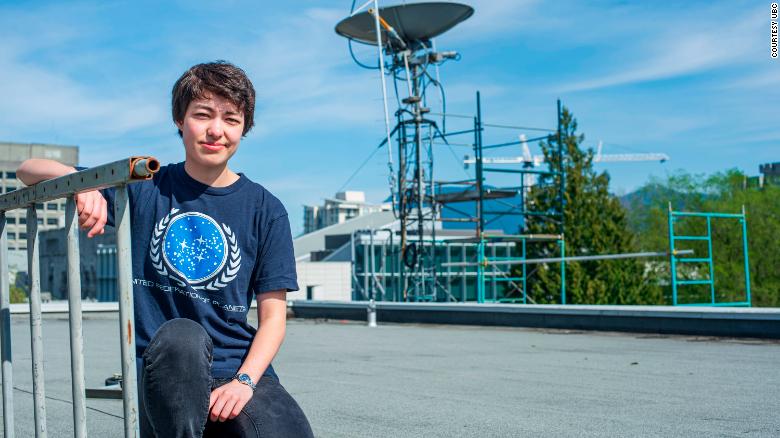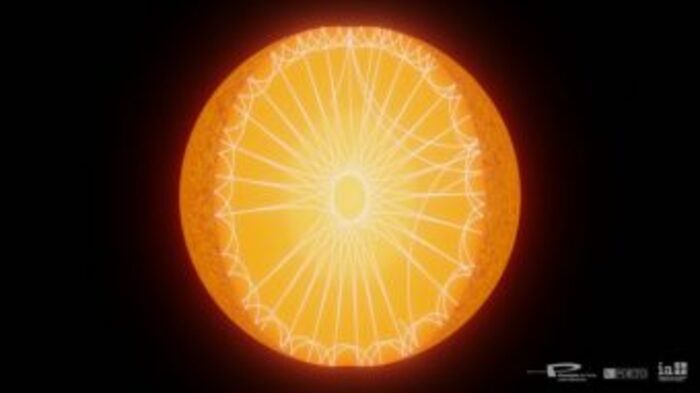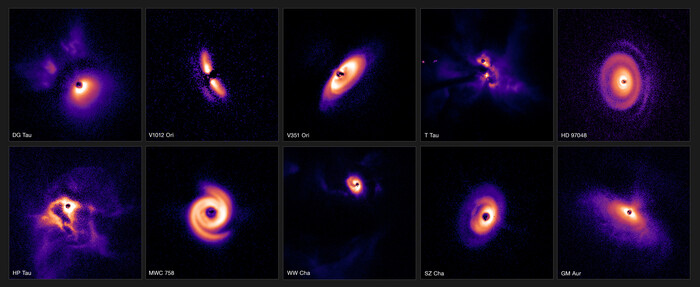- Click to share on Facebook (Opens in a new window)
- Click to share on Twitter (Opens in a new window)
- Click here to share on LinkedIn (Opens in a new window)
- Click to email a friend (Opens in a new window)
Astronomers discover baby exoplanet 0:33
(CNN) - Michelle Kunimoto has a special ability to find exoplanets or planets that orbit stars outside our solar system.
The astronomy student at the University of British Columbia found four while working on her degree.
Now that she is a doctoral candidate, she discovered 17 additional planets analyzing data from NASA's Kepler mission, which ended in 2018.
The sizes of 17 new possible planets, in orange, compared to representations of Mart, Earth and Neptune. The green planet is KIC-7340288, a rocky planet in a habitable zone of its star.
One is within the habitable zone of its star. The distance allows temperatures and conditions that could be suitable for liquid water, and life, to be on the surface. Potentially habitable exoplanets are of particular interest to Kunimoto and his research.
A study that includes their findings was published Thursday in The Astronomical Journal .
"This planet is about a thousand light years away, so we won't be there soon!" Kunimoto said in a statement. "But this is a really exciting finding, since so far only 15 small confirmed planets have been found in the Habitable Zone in Kepler data."
The exoplanet, known as KIC-7340288 b, is approximately 1.5 times the size of the Earth, probably rocky like our planet and not gaseous.
A year on this planet takes about 142.5 Earth days, and its orbit is slightly larger than the Mercury route around our sun. Receive a third of the light that our own planet receives from the Sun.
Kunimoto found this and the other 16 using the transit method when looking at data from NASA's Kepler mission.
Michelle Kunimoto
"Every time a planet passes in front of a star, it blocks a portion of that star's light and causes a temporary decrease in the brightness of the star," Kunimoto said.
"By finding these dives, known as transits, you can start gathering information about the planet, such as its size and how long it takes to orbit."
Most of the other planets Kunimoto found were significantly larger than Earth, up to eight times. The smallest is only two thirds of the Earth and is one of the smallest found by Kepler so far.
Although the Kepler mission ended in 2018, the data collected during the nine years of the spacecraft search space will boost astronomers' research in the coming years. Once in space, he observed the same patch of sky for years, which allowed astronomers to look for exoplanets around the stars.
During the mission, Kepler discovered 2,899 exoplanet candidates and 2,681 confirmed exoplanets in our galaxy, revealing that our solar system is not the only home to planets.
Kepler also allowed astronomers to discover that 20% to 50% of the stars we can see in the night sky are likely to have small, rocky, planet-sized planets within their habitable zones, which means that water Liquid could accumulate on the surface, and life as we know it could exist on these planets.
Kunimoto conducted a follow-up investigation of the planets that he found in the data with former university student Henry Ngo, a Ph.D. Candidate at the California Institute of Technology.
"I took pictures of the stars as I was from space, using adaptive optics," he said. "I could tell if there was a star nearby that could have affected Kepler measurements."
They made observations using the 8-meter Gemini North telescope in Hawaii and its imaging instruments and near-infrared spectrometer, allowing for a clear and detailed look to follow their findings in the data.
The next step for Kunimoto: take a closer look at the known exoplanet census compiled by Kepler so far and look for more planets within the habitable zone.
"We will calculate how many planets are expected for stars with different temperatures," said Jaymie Matthews, Kunimoto's doctoral supervisor.
“A particularly important result will be to find a rate of occurrence of planets in the Earth's Habitable Zone. How many planets similar to Earth are there? Pay attention".
Exoplanetexoplanets




/cloudfront-eu-central-1.images.arcpublishing.com/prisa/TQ73US57UFGWTIXR7C3BS2OTIA.jpg)



